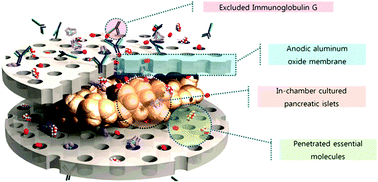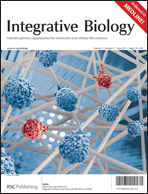Anodic aluminium oxide membranes for immunoisolation with sufficient oxygen supply for pancreatic islets
Abstract
Immunoisolation membranes have been developed for various cell encapsulations for therapeutic purposes. However effective encapsulation systems have been hindered by low oxygen (O2) permeability or imperfect immunoisolation caused by either low porosity or non-uniform pore geometry. Here, we report an encapsulation method that uses an anodic aluminum oxide membrane formed by polyethylene oxide


 Please wait while we load your content...
Please wait while we load your content...